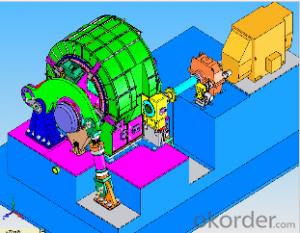Mtn Solar Inverter Jumia
Mtn Solar Inverter Jumia Related Searches
Best Inverter Solar Panel Solar Panel On Roof Rack Inverter To Solar Panel Ratio Solar Panel Decking Lights Solar Panel Inverter Box 1000 Watt Solar Panel Inverter 12 Volt Solar Panel Inverter Plastic Solar Lanterns Buy Solar Panel Inverter Solar Panel Inverter CostHot Searches
Type Of Inverter For Solar Types Of Inverter For Solar Used Solar Inverter For Sale Inverter Size For Solar System Solar Edge Inverter For Sale 5kw Solar Inverter For Sale Solar Inverter For Sale Solar Inverter For Battery Solar Inverter For Split Ac Solar Inverter For Laptop Solar Inverter For Fridge Solar With Inverter Price Solar Inverter With 2 Battery Solar Inverter Price In China Best Solar Inverter In China Solar Inverter Price In Dubai Solar Inverter Price In Uae Solar Inverter Price In Kenya Solar Inverter Price In Kerala Solar Hot Water Collectors For SaleMtn Solar Inverter Jumia Supplier & Manufacturer from China
Okorder.com is a professional Mtn Solar Inverter Jumia supplier & manufacturer, offers integrated one-stop services including real-time quoting and online cargo tracking. We are funded by CNBM Group, a Fortune 500 enterprise and the largest Mtn Solar Inverter Jumia firm in China.Hot Products
FAQ
- A solar inverter handles varying solar irradiance levels by continuously monitoring the incoming solar energy and adjusting its operations accordingly. It converts the direct current (DC) produced by solar panels into alternating current (AC) that can be used to power electrical devices. When the solar irradiance levels are high, the inverter optimizes the power output to match the maximum potential of the solar panels. Conversely, during low solar irradiance, the inverter adjusts its operations to ensure optimal efficiency and power generation. This adaptive nature of solar inverters allows them to efficiently harness solar energy under varying conditions.
- A solar inverter handles voltage transients by regulating and stabilizing the incoming DC voltage from the solar panels, and converting it into a steady AC voltage suitable for use in the electrical grid or for powering appliances. It uses various electronic components and control algorithms to monitor and adjust the voltage levels, ensuring that any sudden changes or fluctuations in the input voltage are smoothed out and the output remains consistent and within acceptable limits.
- MPPT, or Maximum Power Point Tracking, improves the efficiency of a solar inverter by constantly adjusting the operating point of the solar panel to extract maximum power from the sunlight. It ensures that the solar panel operates at its maximum power point, regardless of changing weather conditions or variations in the solar irradiance. This optimization leads to higher energy conversion efficiency, maximizing the power output of the solar panel and ultimately increasing the overall efficiency of the solar inverter.
- Yes, there are some safety concerns with solar inverters. These concerns mainly revolve around electrical safety and fire hazards. Solar inverters handle high voltage DC electricity and convert it into AC electricity, which can pose a risk of electric shock if not installed or maintained properly. Additionally, faulty or poorly designed inverters may overheat or catch fire, potentially endangering the surrounding area. It is crucial to ensure that solar inverters meet the necessary safety standards and are installed by qualified professionals to mitigate these risks.
- Yes, a solar inverter can be used with solar-powered security systems. A solar inverter is responsible for converting the DC power generated by solar panels into AC power that can be used to power various electrical devices, including security systems. By using a solar inverter, solar-powered security systems can efficiently utilize the energy generated by solar panels to operate effectively.
- The maximum input voltage for a solar inverter depends on the specific model and manufacturer. It can vary, but generally, solar inverters can handle input voltages ranging from 300 to 1000 volts.
- Yes, a solar inverter can be used with solar-powered streetlights. The solar inverter is responsible for converting the direct current (DC) produced by the solar panels into alternating current (AC) that can be used to power streetlights. This conversion allows the solar-powered streetlights to operate efficiently and effectively, utilizing the energy generated by the solar panels.
- The role of a solar inverter in a solar-powered telecommunications system is to convert the direct current (DC) electricity generated by the solar panels into alternating current (AC) electricity that can be used to power the telecommunications equipment. It also regulates the voltage and frequency of the electricity to ensure a stable and reliable power supply for the system.















































